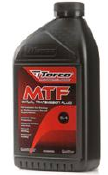 Recreation
Recreation
 Jeep Configuration
Jeep Configuration
 Altas II Transfer Case
Contact
Altas II Transfer Case
Contact
Don's Home
 Recreation
Recreation
 Jeep Configuration
Jeep Configuration
 Altas II Transfer Case
Contact
Altas II Transfer Case
Contact
|
Under Construction 
The atlas II transfer case by Advanced Adapters has several advantages over the stock NP231 or NVG231
Operating Instructions (Pdf)
Oil: | |
|
Amsoil Synthetic Manual Transmission and Transaxle
Gear (MTG) Lube 75W-90 API GL-4 $13/qt Amsoil 75W-90 at Advance Adapters ($48 for 4 quarts plus or Torco MTF GL-4.
If you are unable to find these lubricants, one of the following synthetic oils
can be substituted: Castrol Syntec 5w-50, Valvoline 20w-50 or Mobil 1 Synthetic
15w-50. |
  |
|
GL-5 rated fluid, such as Amsoil SEVERE GEAR® Synthetic Extreme Pressure (EP) Lubricant, is corrosive to the synchronizers.
Replace oil by removing upper connection for view tube.
It has a tendency to loose oil thru the vent tube/breather.
Too much fluid will cause foaming at high speeds. Foaming oil expands and fills the entire cavity, which forces fluid out
the tube; or the breather hose may be restrictive, causing the Atlas to build up pressure. On late model Jeeps, we have found that
you must replace the restrictive breather (located on the firewall) with a free flowing atmospheric vent and larger tube. Excerpts of installation notes:
4x4now.com/butjc.htm The test drive did reveal the need for a little tweaking though. There was a the thud of metal hitting metal when I hit a good bump and when I accelerated hard. The transfer case was bouncing up (or rotating up in the case of hard acceleration) to hit the stock shifter. It took only a few washers to space down the skid plate just enough to avoid this problem. It's a tight fit for the massive Atlas II inside a TJ. www.fourwheeler.com/projectbuild/129_0309_1997_jeep_wrangler_tj_atlas_transfer_case/ A minimum of 1/2 inch is recommended to keep the body from knocking the shifters, and we had to do some cutting of the floor to achieve that. When we installed the skidplate/crossmember combo we found that the Atlas smacked the crossmember. We didn't want to lose valuable clearance by using spacers on the crossmember, or by notching it, so we decided to take the Atlas back out and re-index it one position higher. Once this was accomplished, it fit with no problem. However, our TJ has a 1-inch body lift, so if yours doesn't, some banging on the floor with a hammer for clearance might be required. In the first installment of the TJ project, we installed a Tuffy center console. Now we had to do a bit of trimming on it so that it would clear the shifters. rockcrawler.com/techreports/aa_atlas_tj/part2/ The modifications that need to be made to the crossmember are much more involved. The installer should have sufficient metal-working skills to ensure proper fitment of the Atlas II transfer case. Steve took measurements and cut a gap in the boxed section of the crossmember to allow clearance for the left-hand drop portion of the installed transfer case. After cutting the cap, he started work on the forward portion of the crossmember that allows the transmission mount to seat correctly. In this case, he had to cut around the front three sides of the forward mounting slots that are used to provide a mounting location for stock drivetrains with automatic transmissions. Once three sides were cut, he used a hammer to bend it up at an angle to match the original mounting position. Steve then welded the forward mounting surface into its new position. As is, the movement of the Atlas II shift levers was extremely limited, so he had to cut a relatively small section of metal away from the front of the hole in the floor. Without doing so, the Atlas II wouldn't engage in low range because the levers were obstructed. Once the hole was large enough for the shift levers to move completely unobstructed with the center console installed, Steve cut a perfect oval out of a square piece of sheet metal. He placed the the sheetmetal over the enlarged hole, and riveted it to the floor. He then painted the sheet metal addition, and mounted the boot around the shift levers. Be sure to grease the boot and invert it before reinstalling the center console, and be sure the levers don't bind up on the boot before final assembly. Even though I summed up the lever installation process in about a half-dozen sentences, don't be fooled! This is possibly the most difficult part of the installation, depending on your vehicle. It took Steve several frustrating attempts to get it "just right". Overall, I am pleased with the installation. It took about twelve hours from start to finish at a healthy pace. If you aren't doing it yourself, expect the shop to have your vehicle for at least two days.
From Operating Instructions: With the front in 2WD low, the torque is distributed 100% to the front axle. This factor, combined with the low gearing in the transfer case, can cause undue strain on your front axles. This should only be used for quick tight turns in loose soil conditions with Positraction equipped front differentials.
Links: Return to Jeep Configuration
| |